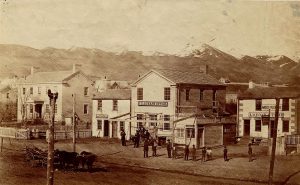The Wonder Woman movie is coming to Morris this weekend! I’m looking forward to it and will be there, even though I’ve been disgusted and disappointed by all the recent DC comic book movies, and despite the fact that the whole Wonder Woman concept has a complicated and somewhat fraught history. I have hopes that this one will be a step up.
But of course the news is all about the men. Alamo Drafthouse theater chain has announced several screenings for women only, and naturally enough, some arrogant privileged men have staggered back in horror and compared themselves to Rosa Parks for refusing to bow down to this awful discrimination.
I’ve got news for them: this is an advertising gimmick. It is not an announcement that they plan to perpetuate ongoing oppression of men, because men as a class are not oppressed. I know this is a shocker, but you can still see Wonder Woman at another showing, not all theaters are trying this promotion, and besides, why do you want to go to a wussy movie that stars a woman as the hero? Aren’t these the same people who were outraged that Ghostbusters was rebooted with a female cast?
Maybe they should go catch a showing of Bound, or Julia, or Tru Love, or The Hours, which are all woman-centric stories, and men are not restricted from watching them. Or maybe Y Tu Mamá También, very sexy, but also confusing for the manly macho types.
Roy Edroso has thoroughly dismasted all the poor boys complaining about giving women only a first shot at the movie, so I won’t rehash all of it, but his opening paragraph brought up something else of concern.
The Trump Presidency is making it hard for even conservatives to take conservatism seriously, so rightwing outlets increasingly avoid The Leader’s nonsense and console themselves with culture-war fantasies. National Review, for example, recently featured long paens to the conservative values of Billy Joel and Dwayne “The Rock” Johnson, and celebrated the holiday weekend with “The Politically Incorrect Guide to Memorial Day Movies” — which they advertised as “films certain to drive your liberal friends crazy,” because they’re war pictures and liberals all think “serving one’s country in uniform” is just something to be “dismissed or derided.” Take that, Hanoi Jane!
I’ve been getting a fair bit of email from young assholes along the lines of “Your son joined the army? You must be so ashamed of him, you pinko liberal pacifist!”, because of course in the republic right now,
-
believing that we should throw soldiers unprepared with no achievable goal into random combat adventures around the globe is patriotic, while
-
believing that a leaner army with less exploitation by defense industries and commitment only to necessary, limited interventions and defense means you hate our troops.
I have a lot of respect for a responsible, restrained military, and none for the armchair generals and gung-ho bloodthirsty civilians who think war is a glorious thing. To assume that as a liberal I dismiss or deride the men and women in the armed services is equivalent to suggesting that because I think Betsy DeVos is a criminally incompetent twit I must also hate education. It’s a stupid deduction.
I am also proud of my army captain son, as I am of all three of my children. One of the things I can be proudest of is that all of them grew up to be their own independent people with their own ideas (that they actually think about). That I was never tempted to join the military does not imply that I consider that decision to be a bad one. I didn’t raise my kids to be my clones.
I also had grandparents and in-laws and uncles who served with distinction in the army, navy, and marines in WWII; I have family in my generation who served; I have nephews who were in the military. The conservatives have a cartoon version of liberals in their heads, and aren’t shy about projecting it on us despite all evidence that they are wrong.










